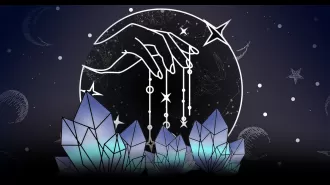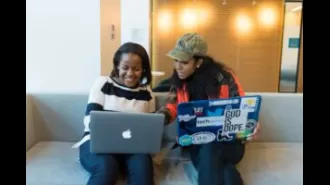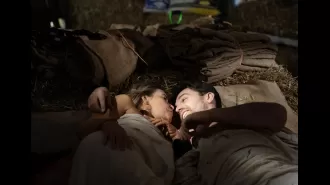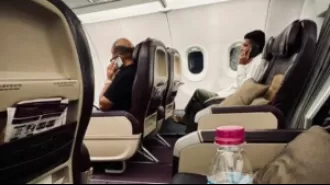The recent school shooting proves that despite being part of the Columbine generation, nothing has changed.
In my first year of school, we practiced a 'code red' drill, which is a drill for an active shooter situation.
September 5th 2024.
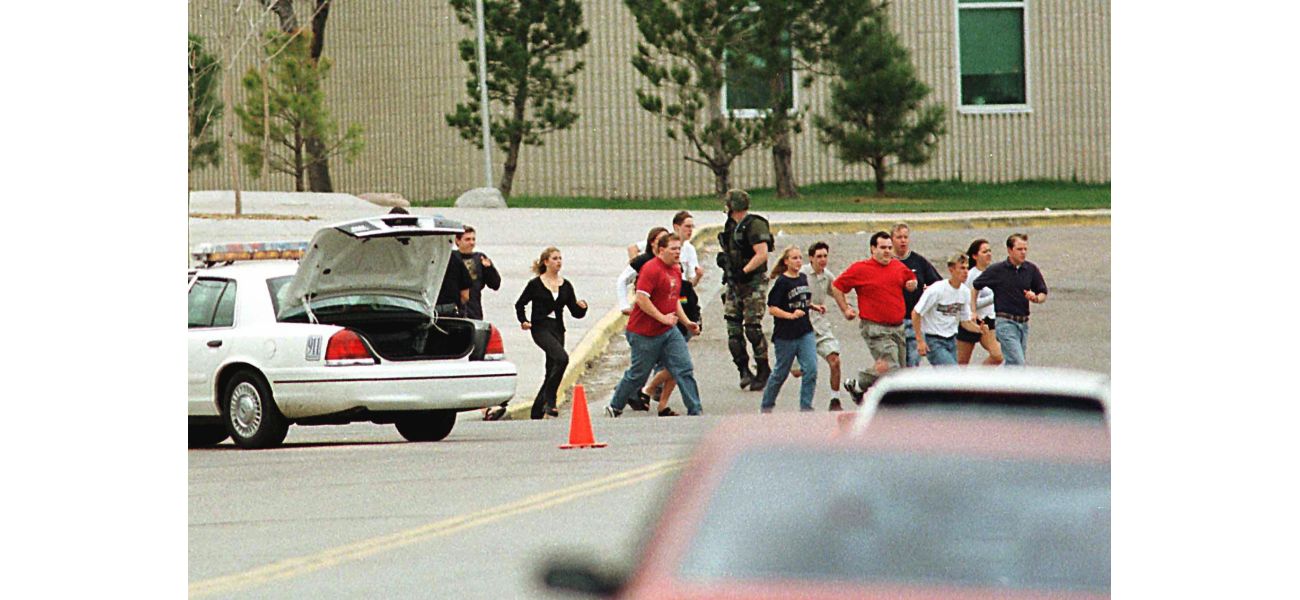
On a scorching August day in 2004, I excitedly walked into Ms. Lawson's kindergarten classroom, eager to start my educational journey. My biggest worries were whether I had all the necessary school supplies, like my sparkly My Little Pony backpack and a fresh pack of crayons, and if I could finally master the art of tying my own shoes. Little did I know, just two months into my kindergarten year, I would experience my first "code red" drill – a practice drill for active school shootings.
As a five-year-old, it was difficult to understand the gravity of what we were preparing for. But my teacher, Ms. Lawson, managed to calm a room full of young and confused children with a game she called "silent hide and seek." These drills had become a norm in schools across America after the tragic event that took place at Columbine High School on April 20, 1999.
I was born on that same day, five years after the horrific shooting. My generation has been dubbed the "Columbine generation," as our entire schooling years were overshadowed by the possibility of another school shooting happening anywhere, at any time. It's a reality that we have grown accustomed to, but one that still haunts us every time we hear of yet another school shooting.
The tragedy at Columbine High School, where two boys walked in with sawed-off shotguns and killed 13 people, marked a new era in America – one where school shootings became normalized. It's been 25 years since that fateful day, and the tragedies have continued, with no significant changes in legislation or gun control measures. Just recently, a high school in Georgia experienced a mass shooting that left four people dead and nine injured.
Every time a school shooting occurs, we hear the same familiar messages of condolences, thoughts, and prayers for the families of the victims. But nothing seems to change. The images of parents anxiously waiting to hear if their child is safe and the heartbreaking scenes of students evacuating their classrooms have become all too familiar.
Growing up in America, school shootings were a constant threat. Even in my preschool, where my mother worked, they now have "code red" drills for children as young as two years old. My mom recalls how they tried to make it seem like a game to the kids, but they never spoke to us about it directly because they didn't want us to live in fear.
My family has three children – my older brother and sister born in the early 1990s, and myself in 1999. My sister's first year of kindergarten coincided with the 1996 Dunblane Massacre in Scotland, where 16 children and one teacher were killed. The UK responded by enacting stricter gun laws, including a ban on handguns, and there have been no similar incidents since. In contrast, the US has had a staggering 416 school shootings since Columbine.
As I went through school, the tragedies kept happening, increasing in number and violence. By the time I finished kindergarten, there were already 11 school shootings. And while baking Christmas cookies with my grandma in eighth grade, we watched a live news stream of the press conference for the 2012 Sandy Hook shooting, where 20 students and six adults were shot and killed. It was a stark contrast to the festive scene in front of us.
My grandpa sat in silence, watching the TV intently, while I sprinkled cinnamon sugar on my snickerdoodles. The youngest victims of Sandy Hook were likely just learning to tie their shoes, like I had at their age. These horrifying events have become a part of life for my generation, and it's not normal.
Even when we weren't doing "code red" drills, the schools were always on high alert. In middle school, students would try to get a laugh by popping bags of crisps in the cafeteria, mimicking the sound of a gunshot. After the initial "bang," the cafeteria would fall silent, and the students would jeer, knowing the culprit would get in trouble. It wasn't until years later that I realized why teachers were so upset – the sound sometimes resembled a gunshot.
After graduating high school, I moved to London, where I no longer have to fear going to a movie theatre or wondering if the fireworks I hear on New Year's Eve are actually gunshots. But my loved ones still live in America, and I can't help but feel a sense of dread every time I hear news of another school shooting.
I'm lucky to have never been in an active shooting situation, but the caution and drills that were instilled in me from a young age have stuck with me. Run, hide, fight. Block the doors, avoid windows. Turn off your phone. Stay quiet. These phrases and safety tips have become second nature to me, and it's not something I even realized until I moved abroad.
I'm tired of reading stories about children who went to school and never returned. It's a reality that makes me physically ill, and it's not normal to grow up praying before every movie screening that a gunman doesn't burst in. I'm not a politician – just a person who is fed up with the lack of action and change in the face of these tragedies.
As I write this article on the 25th anniversary of the Columbine shooting, I can't help but feel a sense of hopelessness. Over the years, there have been countless school shootings, and yet nothing has changed. It's time for politicians to step up and take real action to prevent these senseless acts of violence. Our children deserve better – they deserve to feel safe in their own schools.
The Columbine shooting was a pivotal moment in American history, ushering in a new era of normalized school shootings. I still remember my first day of kindergarten like it was yesterday. The excitement of picking out a glittery My Little Pony backpack and a fresh pack of crayons was all I could think about. Tying my own shoes was also a top priority. But within just two months of starting school, my classmates and I were introduced to a new type of drill: the dreaded "code red" drill. It was a surreal experience for a 5-year-old to be told that we needed to practice hiding in silence, in case of an active shooter on our school grounds. Our teacher, Ms. Lawson, cleverly called it "silent hide and seek." It was a tough task for a group of young, innocent children, but somehow she managed to keep us calm and quiet in the dark classroom.
These drills had become a routine part of school life, ever since the tragic events of April 20, 1999. That was five years before I started school, and I was still peacefully in my mother's womb at the time. But my future was already determined – I was a part of the "Columbine generation." The horrific events that took place at Columbine High School, where two individuals (who shall not be named) walked in with sawed-off shotguns and killed 13 people, had a profound impact on our society. Sadly, despite the passage of 25 years, school shootings have continued to occur with alarming frequency, with no significant changes or improvements being made.
Just last year, the community of Apalachee High School in Georgia was struck by a mass shooting that claimed the lives of four people and injured nine others. This tragic event was just one in a long list of school shootings that have taken place since Columbine. The response from politicians and authorities has been the same tired rhetoric of offering thoughts and prayers to the families of the victims, but nothing ever seems to change. The images of parents anxiously waiting to hear if their child was one of the victims have become all too familiar.
I grew up running around the hallways of my school, just like any other kid. But my school happened to be a preschool, where my mother still works to this day. The school teaches children aged 2 to 5, and although they didn't have "code red" drills when I attended, they do now. My mom has told me that the children don't fully understand the purpose of these drills, and it's treated like a game of "1, 2, 3, everyone down on the floor, be as quiet as you can!" It breaks my heart to think that these innocent children have to be prepared for such a terrifying possibility.
My parents have three children – my brother and sister were born in the early 1990s, and I joined the family in 1999. My sister's first year of kindergarten coincided with the 1996 Dunblane Massacre, where 16 children and one teacher were killed in a small Scottish town. The UK responded by passing stricter gun laws, including a ban on handguns, and there have been no similar incidents since then. However, in the US, there have been a staggering 416 school shootings since Columbine. My entire schooling years were shaped by the fear and understanding that events like Columbine or Dunblane could happen anywhere, at any time.
The year I finished kindergarten, there were 11 school shootings. My sister started school the same year that 16 children were killed in a Scottish primary school. These are not normal things for children to experience, but for my generation in America, they have become a part of life. I remember a conversation with my mom when I was 16, discussing the Charleston church shooting and gun safety. I casually mentioned that whenever I go to a movie theater, I always check for the exits, just in case. My mom was struck by my nonchalant attitude and told me that she hated that I felt this was a normal thing to do.
And she was right – it's not normal. But it's all my generation has known as the norm. My parents never had to worry about locating exit doors in a crowded movie theater or lecture hall, but for me, it's second nature. As I went through school, the tragedies kept happening, increasing in number and violence. When I was 8 years old, in second grade, 32 people died in the Virginia Tech shooting. I was still learning my times tables and obsessing over Hannah Montana at the time. In eighth grade, while baking Christmas cookies with my Grandma, we watched a live news stream of the press conference for the Sandy Hook shooting, where 20 students and 6 adults were shot and killed. It was a stark contrast to the warm and cozy scene in the kitchen, dusted with powdered sugar.
I remember my grandpa sitting in silence, his hands folded beneath his chin, as I sprinkled cinnamon sugar on my snickerdoodles. It's hard to comprehend that the youngest victims in this tragedy had just learned to tie their shoes, like I had. Active shooter drills became a regular part of our school life, and even when we weren't practicing, the schools were always on high alert. In middle school, at lunchtime, students would try to get a laugh out of their friends by loudly popping bags of chips. After the initial "bang," the cafeteria would fall silent, and the kids would jeer, knowing the person responsible would get in trouble. It wasn't until years later that I realized the reason teachers were so upset was that the pop sounded like a gunshot.
Now, living in London, I don't have to worry about school shootings in my daily life. But my loved ones still live in America, and I can't help but feel the weight of this issue. Even though I no longer pray before going to the movies or wonder if the fireworks I hear on New Year's Eve are gunshots, I can't escape the deep level of caution that has been instilled in me since I was five years old. It's like a training that I didn't even realize I had until I moved abroad. Phrases and tips taught to me throughout my education, like "run, hide, fight" or "block the doors, avoid windows, turn off your phone, stay quiet," stick out in my mind.
My generation in America has grown up thinking that school shootings are just a part of life. But our parents and grandparents never had to experience the constant news coverage of school shooting alerts or the fear of sending their children to school each day. It's not normal to grow up praying before each movie screening that a gunman won't burst in. I consider myself lucky because I have never been in an active shooting situation and haven't lost friends or witnessed classmates being shot. But what I do know is that over 25 years ago, two cowards walked into Columbine High School and opened fire. And nothing has changed since then. This article was originally published on April 20, 2024 – the 25th anniversary of the Columbine School Shooting.
Since then, there have been countless school shootings, including the following: Columbine High School, Heritage High School, Deming Middle School, Fort Gibson Middle School, Erwin High School, Dimmitt Middle School, Mount Healthy North Junior High, Pioneer Elementary School, Newman Smith High School, Caro Learning Center, Hueneme High School, Osborn High School, Granite Hills High School, Kentwood High School, Santana High School, Monroe City Alternative Center, Wahluke High School, Ennis High School, Raymond High School, John Barrett Middle School, Ambler Avenue Elementary School, Scurry-Rosser High School, West Carter Middle School, John McDonogh High School, Red Lion Area Junior High School, Rock L. Butler Middle School, Burns Middle School, Rocori High School, Lewis and Clark High School, Marion High School, Fay Galloway Elementary School, Columbia High School, Red Lake Senior High School, and many more.
I may not live in America anymore, but I still have loved ones there, and their safety is always on my mind. Even though I no longer have to pray before going to the movies, I still jump when I hear a car backfire in central London. And during New Year's celebrations, I don't have to wonder if the fireworks I'm hearing are actually gunshots. I didn't grow up living in fear – my parents wouldn't allow that. But I have a deep level of caution instilled in me since I was five years old – a training that I didn't even realize I had until I moved abroad. It's not normal, and it shouldn't be. But sadly, for my generation in America, it's all we've ever known. And it's time for that to change.
As a five-year-old, it was difficult to understand the gravity of what we were preparing for. But my teacher, Ms. Lawson, managed to calm a room full of young and confused children with a game she called "silent hide and seek." These drills had become a norm in schools across America after the tragic event that took place at Columbine High School on April 20, 1999.
I was born on that same day, five years after the horrific shooting. My generation has been dubbed the "Columbine generation," as our entire schooling years were overshadowed by the possibility of another school shooting happening anywhere, at any time. It's a reality that we have grown accustomed to, but one that still haunts us every time we hear of yet another school shooting.
The tragedy at Columbine High School, where two boys walked in with sawed-off shotguns and killed 13 people, marked a new era in America – one where school shootings became normalized. It's been 25 years since that fateful day, and the tragedies have continued, with no significant changes in legislation or gun control measures. Just recently, a high school in Georgia experienced a mass shooting that left four people dead and nine injured.
Every time a school shooting occurs, we hear the same familiar messages of condolences, thoughts, and prayers for the families of the victims. But nothing seems to change. The images of parents anxiously waiting to hear if their child is safe and the heartbreaking scenes of students evacuating their classrooms have become all too familiar.
Growing up in America, school shootings were a constant threat. Even in my preschool, where my mother worked, they now have "code red" drills for children as young as two years old. My mom recalls how they tried to make it seem like a game to the kids, but they never spoke to us about it directly because they didn't want us to live in fear.
My family has three children – my older brother and sister born in the early 1990s, and myself in 1999. My sister's first year of kindergarten coincided with the 1996 Dunblane Massacre in Scotland, where 16 children and one teacher were killed. The UK responded by enacting stricter gun laws, including a ban on handguns, and there have been no similar incidents since. In contrast, the US has had a staggering 416 school shootings since Columbine.
As I went through school, the tragedies kept happening, increasing in number and violence. By the time I finished kindergarten, there were already 11 school shootings. And while baking Christmas cookies with my grandma in eighth grade, we watched a live news stream of the press conference for the 2012 Sandy Hook shooting, where 20 students and six adults were shot and killed. It was a stark contrast to the festive scene in front of us.
My grandpa sat in silence, watching the TV intently, while I sprinkled cinnamon sugar on my snickerdoodles. The youngest victims of Sandy Hook were likely just learning to tie their shoes, like I had at their age. These horrifying events have become a part of life for my generation, and it's not normal.
Even when we weren't doing "code red" drills, the schools were always on high alert. In middle school, students would try to get a laugh by popping bags of crisps in the cafeteria, mimicking the sound of a gunshot. After the initial "bang," the cafeteria would fall silent, and the students would jeer, knowing the culprit would get in trouble. It wasn't until years later that I realized why teachers were so upset – the sound sometimes resembled a gunshot.
After graduating high school, I moved to London, where I no longer have to fear going to a movie theatre or wondering if the fireworks I hear on New Year's Eve are actually gunshots. But my loved ones still live in America, and I can't help but feel a sense of dread every time I hear news of another school shooting.
I'm lucky to have never been in an active shooting situation, but the caution and drills that were instilled in me from a young age have stuck with me. Run, hide, fight. Block the doors, avoid windows. Turn off your phone. Stay quiet. These phrases and safety tips have become second nature to me, and it's not something I even realized until I moved abroad.
I'm tired of reading stories about children who went to school and never returned. It's a reality that makes me physically ill, and it's not normal to grow up praying before every movie screening that a gunman doesn't burst in. I'm not a politician – just a person who is fed up with the lack of action and change in the face of these tragedies.
As I write this article on the 25th anniversary of the Columbine shooting, I can't help but feel a sense of hopelessness. Over the years, there have been countless school shootings, and yet nothing has changed. It's time for politicians to step up and take real action to prevent these senseless acts of violence. Our children deserve better – they deserve to feel safe in their own schools.
The Columbine shooting was a pivotal moment in American history, ushering in a new era of normalized school shootings. I still remember my first day of kindergarten like it was yesterday. The excitement of picking out a glittery My Little Pony backpack and a fresh pack of crayons was all I could think about. Tying my own shoes was also a top priority. But within just two months of starting school, my classmates and I were introduced to a new type of drill: the dreaded "code red" drill. It was a surreal experience for a 5-year-old to be told that we needed to practice hiding in silence, in case of an active shooter on our school grounds. Our teacher, Ms. Lawson, cleverly called it "silent hide and seek." It was a tough task for a group of young, innocent children, but somehow she managed to keep us calm and quiet in the dark classroom.
These drills had become a routine part of school life, ever since the tragic events of April 20, 1999. That was five years before I started school, and I was still peacefully in my mother's womb at the time. But my future was already determined – I was a part of the "Columbine generation." The horrific events that took place at Columbine High School, where two individuals (who shall not be named) walked in with sawed-off shotguns and killed 13 people, had a profound impact on our society. Sadly, despite the passage of 25 years, school shootings have continued to occur with alarming frequency, with no significant changes or improvements being made.
Just last year, the community of Apalachee High School in Georgia was struck by a mass shooting that claimed the lives of four people and injured nine others. This tragic event was just one in a long list of school shootings that have taken place since Columbine. The response from politicians and authorities has been the same tired rhetoric of offering thoughts and prayers to the families of the victims, but nothing ever seems to change. The images of parents anxiously waiting to hear if their child was one of the victims have become all too familiar.
I grew up running around the hallways of my school, just like any other kid. But my school happened to be a preschool, where my mother still works to this day. The school teaches children aged 2 to 5, and although they didn't have "code red" drills when I attended, they do now. My mom has told me that the children don't fully understand the purpose of these drills, and it's treated like a game of "1, 2, 3, everyone down on the floor, be as quiet as you can!" It breaks my heart to think that these innocent children have to be prepared for such a terrifying possibility.
My parents have three children – my brother and sister were born in the early 1990s, and I joined the family in 1999. My sister's first year of kindergarten coincided with the 1996 Dunblane Massacre, where 16 children and one teacher were killed in a small Scottish town. The UK responded by passing stricter gun laws, including a ban on handguns, and there have been no similar incidents since then. However, in the US, there have been a staggering 416 school shootings since Columbine. My entire schooling years were shaped by the fear and understanding that events like Columbine or Dunblane could happen anywhere, at any time.
The year I finished kindergarten, there were 11 school shootings. My sister started school the same year that 16 children were killed in a Scottish primary school. These are not normal things for children to experience, but for my generation in America, they have become a part of life. I remember a conversation with my mom when I was 16, discussing the Charleston church shooting and gun safety. I casually mentioned that whenever I go to a movie theater, I always check for the exits, just in case. My mom was struck by my nonchalant attitude and told me that she hated that I felt this was a normal thing to do.
And she was right – it's not normal. But it's all my generation has known as the norm. My parents never had to worry about locating exit doors in a crowded movie theater or lecture hall, but for me, it's second nature. As I went through school, the tragedies kept happening, increasing in number and violence. When I was 8 years old, in second grade, 32 people died in the Virginia Tech shooting. I was still learning my times tables and obsessing over Hannah Montana at the time. In eighth grade, while baking Christmas cookies with my Grandma, we watched a live news stream of the press conference for the Sandy Hook shooting, where 20 students and 6 adults were shot and killed. It was a stark contrast to the warm and cozy scene in the kitchen, dusted with powdered sugar.
I remember my grandpa sitting in silence, his hands folded beneath his chin, as I sprinkled cinnamon sugar on my snickerdoodles. It's hard to comprehend that the youngest victims in this tragedy had just learned to tie their shoes, like I had. Active shooter drills became a regular part of our school life, and even when we weren't practicing, the schools were always on high alert. In middle school, at lunchtime, students would try to get a laugh out of their friends by loudly popping bags of chips. After the initial "bang," the cafeteria would fall silent, and the kids would jeer, knowing the person responsible would get in trouble. It wasn't until years later that I realized the reason teachers were so upset was that the pop sounded like a gunshot.
Now, living in London, I don't have to worry about school shootings in my daily life. But my loved ones still live in America, and I can't help but feel the weight of this issue. Even though I no longer pray before going to the movies or wonder if the fireworks I hear on New Year's Eve are gunshots, I can't escape the deep level of caution that has been instilled in me since I was five years old. It's like a training that I didn't even realize I had until I moved abroad. Phrases and tips taught to me throughout my education, like "run, hide, fight" or "block the doors, avoid windows, turn off your phone, stay quiet," stick out in my mind.
My generation in America has grown up thinking that school shootings are just a part of life. But our parents and grandparents never had to experience the constant news coverage of school shooting alerts or the fear of sending their children to school each day. It's not normal to grow up praying before each movie screening that a gunman won't burst in. I consider myself lucky because I have never been in an active shooting situation and haven't lost friends or witnessed classmates being shot. But what I do know is that over 25 years ago, two cowards walked into Columbine High School and opened fire. And nothing has changed since then. This article was originally published on April 20, 2024 – the 25th anniversary of the Columbine School Shooting.
Since then, there have been countless school shootings, including the following: Columbine High School, Heritage High School, Deming Middle School, Fort Gibson Middle School, Erwin High School, Dimmitt Middle School, Mount Healthy North Junior High, Pioneer Elementary School, Newman Smith High School, Caro Learning Center, Hueneme High School, Osborn High School, Granite Hills High School, Kentwood High School, Santana High School, Monroe City Alternative Center, Wahluke High School, Ennis High School, Raymond High School, John Barrett Middle School, Ambler Avenue Elementary School, Scurry-Rosser High School, West Carter Middle School, John McDonogh High School, Red Lion Area Junior High School, Rock L. Butler Middle School, Burns Middle School, Rocori High School, Lewis and Clark High School, Marion High School, Fay Galloway Elementary School, Columbia High School, Red Lake Senior High School, and many more.
I may not live in America anymore, but I still have loved ones there, and their safety is always on my mind. Even though I no longer have to pray before going to the movies, I still jump when I hear a car backfire in central London. And during New Year's celebrations, I don't have to wonder if the fireworks I'm hearing are actually gunshots. I didn't grow up living in fear – my parents wouldn't allow that. But I have a deep level of caution instilled in me since I was five years old – a training that I didn't even realize I had until I moved abroad. It's not normal, and it shouldn't be. But sadly, for my generation in America, it's all we've ever known. And it's time for that to change.
[This article has been trending online recently and has been generated with AI. Your feed is customized.]
[Generative AI is experimental.]
0
0
Submit Comment

